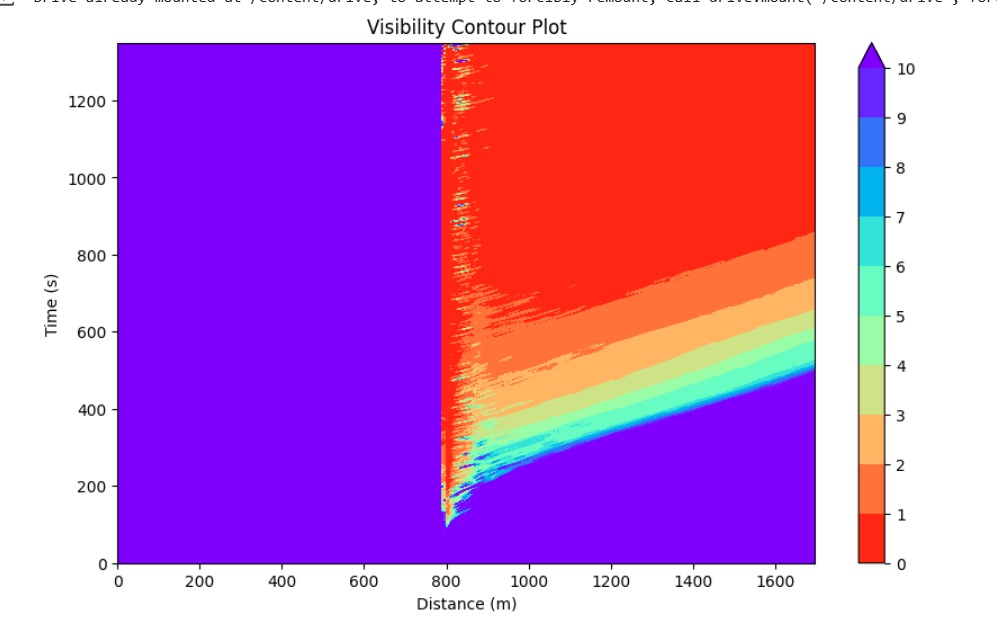
Tunnels used for roadways, metro systems, or utility corridors are essential to modern infrastructure, especially in rapidly urbanising cities across the Middle East and around the world. However, these confined environments present significant fire safety challenges. In the event of a fire, restricted ventilation and the presence of high fuel loads such as vehicles, flammable cargo, or large numbers of passengers can lead to rapid fire development and extensive smoke spread. This poses serious risks to life safety and complicates emergency response operations.
To address these challenges, Computational Fluid Dynamics (CFD) fire modelling is an essential tool. It enables engineers and designers to simulate tunnel fire scenarios, assess smoke propagation, validate egress strategies, and optimise mechanical ventilation systems to maintain occupant tenability and compliance with standards such as NFPA 130 and local fire safety codes.


Traditional prescriptive approaches to tunnel fire safety often fall short in addressing the dynamic, site-specific risks associated with underground infrastructure. CFD modelling, by contrast, allows for a performance-based design approach. This method accounts for variables such as tunnel geometry, ventilation system behaviour, passenger density, train length, and fire location.
At LAVA Consultants, we use advanced CFD tools like FDS (Fire Dynamics Simulator) to simulate complex tunnel fire scenarios. Our models provide detailed predictions of temperature distribution, smoke movement, toxic gas concentrations, and airflow patterns that is crucial for safety assessments, system sizing, and authority approvals.
The location of the fire within the tunnel has a significant impact on smoke spread and egress performance. In rail tunnels, we typically model fires:
Each location affects airflow dynamics, backlayering potential, and passenger detrainment routes. Sensitivity studies are often carried out to ensure robustness of the ventilation and evacuation strategy under all credible scenarios.
In tunnel fire simulations, fire size is defined by the peak Heat Release Rate (HRR). For metro tunnels, we typically assess fires ranging from 1-2 MW (equipment fire) to 5-15 MW (rolling stock fire). Key factors that influence fire size include:
Adopting realistic fire sizes aligned with NFPA 130 or international best practice is critical for accurate tenability and smoke management analysis.
In the event of a tunnel fire, rapid and controlled evacuation is paramount. Egress strategies typically involve:
Our CFD and evacuation modelling workflows (using Pathfinder) are integrated to assess Required Safe Egress Time (RSET) and compare it with Available Safe Egress Time (ASET) under fire conditions. These models consider crowd flow, visibility, heat exposure, and CO concentration to ensure occupants can reach safety before tenability thresholds are exceeded.
To ensure safe evacuation in long tunnels, cross passages are essential for allowing occupants to move from a fire-affected tunnel to an adjacent, unaffected one. According to NFPA 130, these cross passages must be spaced no more than 244 metres apart. Alternatively, emergency exit structures or egress shafts providing direct access to the surface may be used, provided they are placed at intervals not exceeding 762 metres. These provisions are critical for facilitating timely evacuation and ensuring compliance with life safety standards.
In our modelling, we assess the placement, accessibility, and usage of cross passages and vertical egress routes, factoring in human behaviour, congestion potential, and fire-driven smoke movement.
Mechanical ventilation is the primary defence against smoke spread in tunnels. CFD simulations are used to evaluate both longitudinal and transversal ventilation systems, optimising fan operation to:
Our tunnel models help establish whether the designed system can maintain a smoke-free layer for safe egress, even under power failure or fan degradation conditions. This ensures that emergency systems perform as expected under both normal and worst-case scenarios.
Backlayering refers to smoke travelling upstream (against the airflow), threatening evacuees and first responders. CFD analysis helps determine the critical velocity required to suppress this effect. By simulating temperature, velocity, and visibility contours, we validate whether ventilation systems are capable of clearing smoke effectively and preventing reverse contamination in escape routes or cross passages
As cities in the UAE and Gulf continue to expand their metro and road tunnel networks, fire safety has become more important than ever. At LAVA Consultants, we combine deep technical knowledge of CFD with regional experience to deliver data-driven tunnel fire studies that enhance life safety, support design optimisation, and secure code compliance.
Whether you’re developing a new metro alignment, expanding a utility tunnel, or upgrading existing systems, our team can guide you with tailored modelling solutions and clear performance insights.
Need help with a tunnel fire modelling project in UAE or the wider Middle East?
Contact us at jabir@lavaconsultants.com or explore our full range of Fire Modelling Services.
© 2025 Lava Consultants. All rights reserved